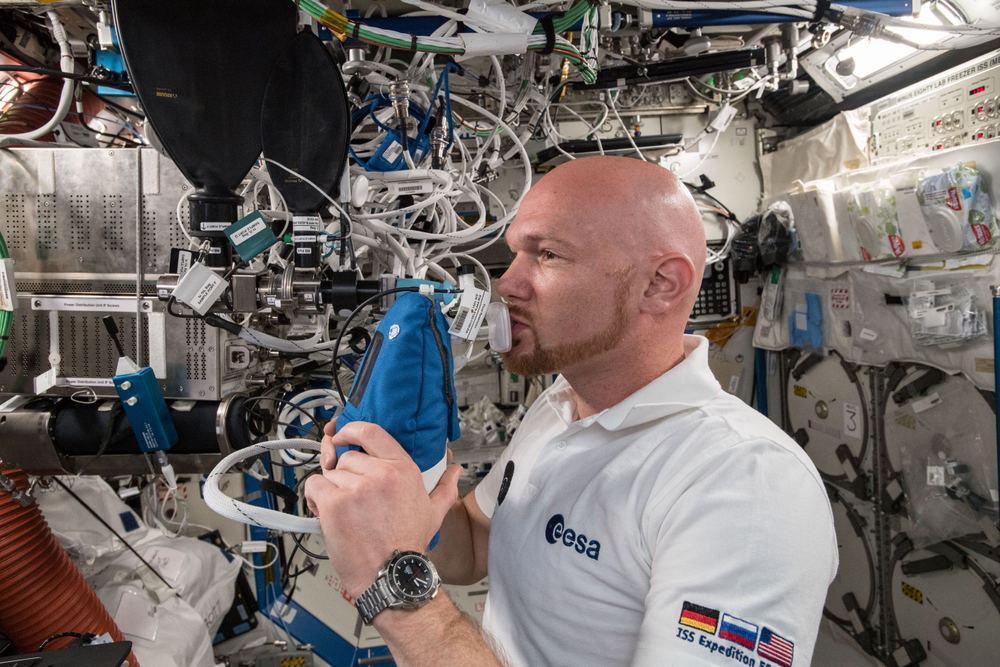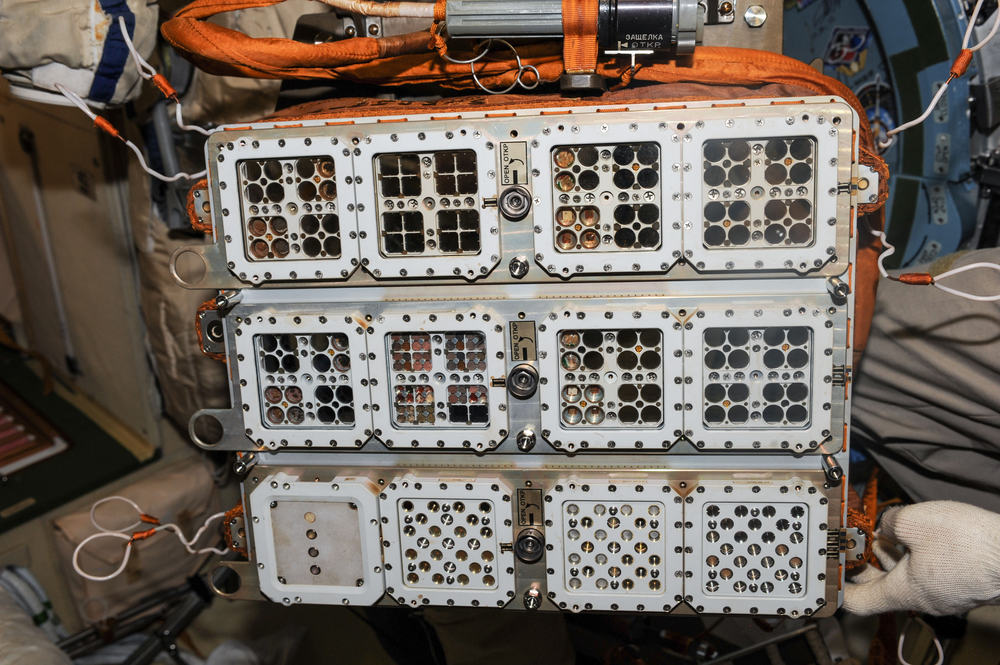Station Science Top News: Feb. 16, 2024
Researchers found that liquids boiled in microgravity have accelerated formation of surface bubbles, larger bubble volume, and bubble growth about 30 times faster than on Earth. However, the addition of finer microstructures on the heated surface led to slower bubble formation, since they influence heat transfer from the substrate to the water (i.e., they act as heat-transfer fins). This finding could help improve technologies based on bubble behavior, including thermal systems and sensors used in medicine and the oil industry.
Bubbles generated by boiling detach from a surface due to interaction of surface tension, buoyancy, and capillarity (a force that moves liquid independent of gravity, such as a paper towel absorbing water). The ISS National Lab investigation Optical Imaging of Bubble Dynamics on Nanostructured Surfaces examined the roles of capillarity and surface tension on bubble dynamics in microgravity, which removes the influence of buoyancy. Microgravity also reduces thermal convection, leading to faster temperature rise at the bubble formation site. Fundamental insights into bubble dynamics help improve sensors that use bubble formation, including those that test biomarkers for cancers, contributing to better medical diagnoses in space and on Earth.
Read more here.
***
Based on changes in the gasses in air exhaled by astronauts before and during spaceflight, researchers suspect that for these subjects, something in the environment triggered airway inflammation at the mission start. Possible causes include poor air quality in the greater Houston area and lifestyle changes imposed by preflight training. Further study is needed, but this result highlights the importance of monitoring lung health and of establishing baseline values in the relevant gravity environment before crew members encounter any risk of inhaling extraterrestrial dust.
ESA's (European Space Agency) Airway Monitoring analyzed air exhaled by astronauts to determine indicators for airway inflammation. Nitric oxide (NO) can indicate airway inflammation, and measuring exhaled nitric oxide partial pressure (PENO) is a way to monitor lung health. Such monitoring is essential on future exploration missions where crew members face a risk of dust inhalation and must have a degree of self-sufficiency for medical diagnostics. Previous research that found reduced baseline (non-inflammatory) exhaled NO in microgravity, combined with the reduced atmospheric pressure expected in exploration vehicles and habitats, further highlight the need to establish reference values for monitoring inflight as well as on the ground. Improved devices for lung diagnostics also could benefit patients with asthma or other airway inflammatory diseases on Earth.

Credit: ESA/Alexander Gerst
***
Researchers examined the outer membrane vesicles (OMVs) of Komagataeibacter oboediens bacteria in microgravity and observed differences in their behavior, including a loss of toxicity to cells, after five years of exposure to Mars-like stressors. For the study, bacteria were isolated from kombucha, a fermented tea drink. This finding provides an understanding of how spaceflight may affect food-grade bacteria and, in turn, the health of astronauts on long-duration missions.
Bacteria produce bioactive molecules that affect their human hosts, including immune system regulation and gut–brain communication. Many of these molecules are carried by OMVs, which use them to communicate with other bacteria and their hosts. OMVs in food-grade bacteria may play a role in human health and disease and could be affected by spaceflight stressors such as microgravity and radiation. This study used data from ESA’s experiment EXPOSE-R2-BIOMEX, which measured survival of terrestrial organisms in space- and Mars-like conditions.








